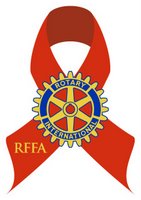The following article about Peter Sotheran, our mission coordinator, appeared in his local newspaper...
Mission to help thousands of Kenyan familiesSep 4 2008 by
Mike Morgan, Evening Gazette
TEESSIDE Rotarian Peter Sotheran is banking on a crash course in Swahili as he prepares to support an international aid mission to Africa.
The long-standing member of the Rotary Club of Guisborough and Great Ayton has been selected to take part in a mission to Kenya, where most of the locals speak Swahili.
Peter, a past president of the club and well known for his involvement in charitable causes, travels out to Nairobi in Kenya in five weeks’ time.
His job is to co-ordinate a 70-strong team of doctors, dentists and opticians
[optometrists in USA] at three campsites in the slums of Nairobi. He said: “My job is to integrate the international volunteers with local voluntary help and many of the locals will have limited command of English.”
Known as a health and hygiene mission, the aim is to screen and treat several hundred young people each day, targeting 12,000 in the two weeks of the mission.
Patients from infants to 20 years of age, plus young mums will be checked and treated.
Two dental clinics will be set up in schools on the edge of the slums, and will be geared to treat around 200 patients a day.
The optical team is equipped to examine up to 25 patients an hour, will produce prescription spectacles within the hour and treat minor eye infections.
“Restoring a patient’s vision restores their independence and enables them to contribute to the family and community,” explained Peter.
Special attention will be given to children in local orphanages, most of whom have lost their parents due to Aids.
Working alongside each of the teams will be a specialist HIV/Aids counselling and treatment unit.
More than 25% of the population of Nairobi (850,000 out of 3.2m) live in the timber and tin-sheet shanties of the slums.
“So many infants are born with Aids-infected blood, we need a massive intervention to try to create an Aids-free generation,” said Sally Platt, a Rotarian from Marietta in Georgia (USA), who is leading the mission.
The project is the pilot of a five-year programme that is funded by the US Government and a host of international corporations.
The 70 volunteers converge on Nairobi over the weekend of September 20.


